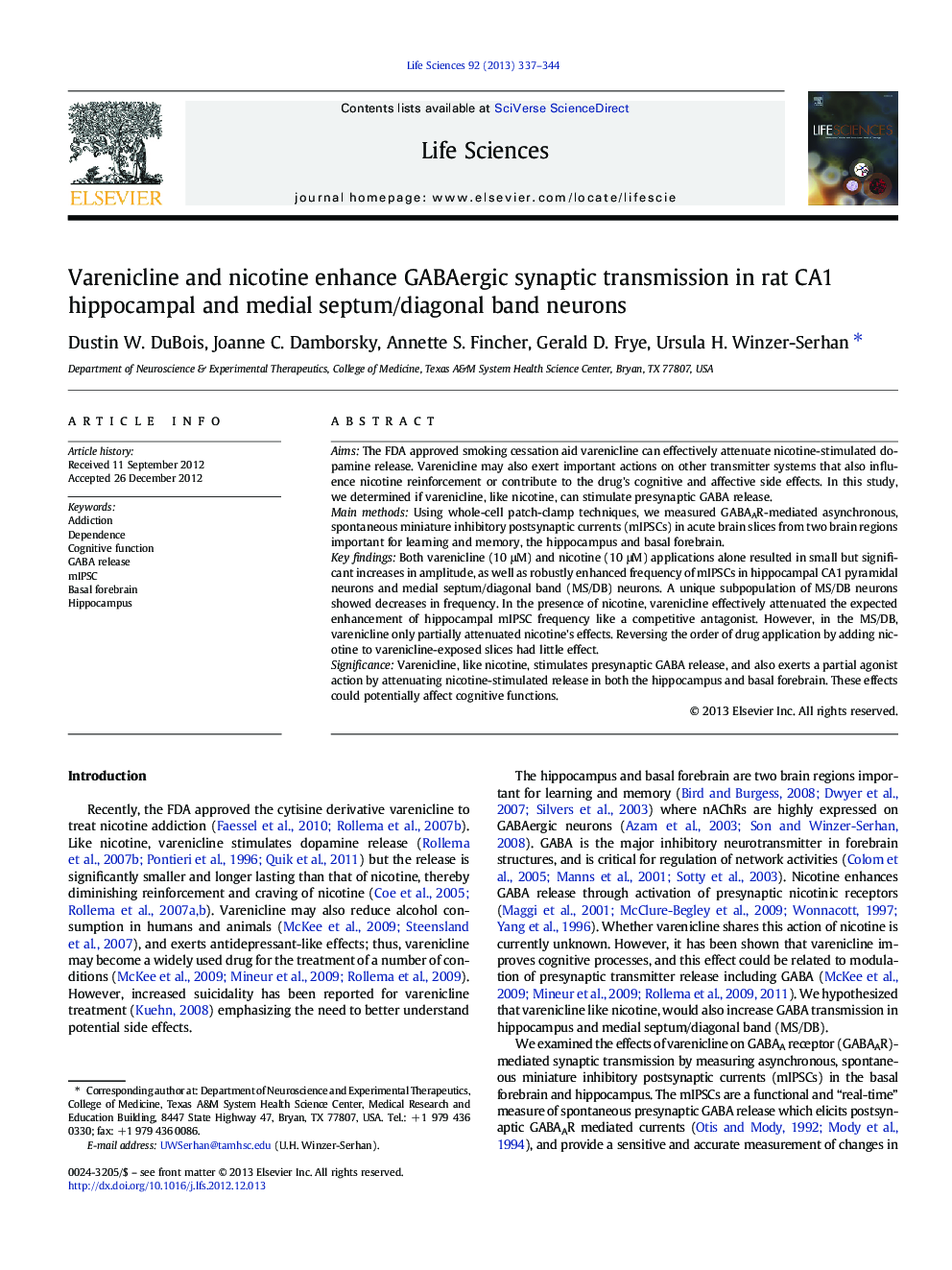| Article ID | Journal | Published Year | Pages | File Type |
|---|---|---|---|---|
| 2551511 | Life Sciences | 2013 | 8 Pages |
AimsThe FDA approved smoking cessation aid varenicline can effectively attenuate nicotine-stimulated dopamine release. Varenicline may also exert important actions on other transmitter systems that also influence nicotine reinforcement or contribute to the drug's cognitive and affective side effects. In this study, we determined if varenicline, like nicotine, can stimulate presynaptic GABA release.Main methodsUsing whole-cell patch-clamp techniques, we measured GABAAR-mediated asynchronous, spontaneous miniature inhibitory postsynaptic currents (mIPSCs) in acute brain slices from two brain regions important for learning and memory, the hippocampus and basal forebrain.Key findingsBoth varenicline (10 μM) and nicotine (10 μM) applications alone resulted in small but significant increases in amplitude, as well as robustly enhanced frequency of mIPSCs in hippocampal CA1 pyramidal neurons and medial septum/diagonal band (MS/DB) neurons. A unique subpopulation of MS/DB neurons showed decreases in frequency. In the presence of nicotine, varenicline effectively attenuated the expected enhancement of hippocampal mIPSC frequency like a competitive antagonist. However, in the MS/DB, varenicline only partially attenuated nicotine's effects. Reversing the order of drug application by adding nicotine to varenicline-exposed slices had little effect.SignificanceVarenicline, like nicotine, stimulates presynaptic GABA release, and also exerts a partial agonist action by attenuating nicotine-stimulated release in both the hippocampus and basal forebrain. These effects could potentially affect cognitive functions.
